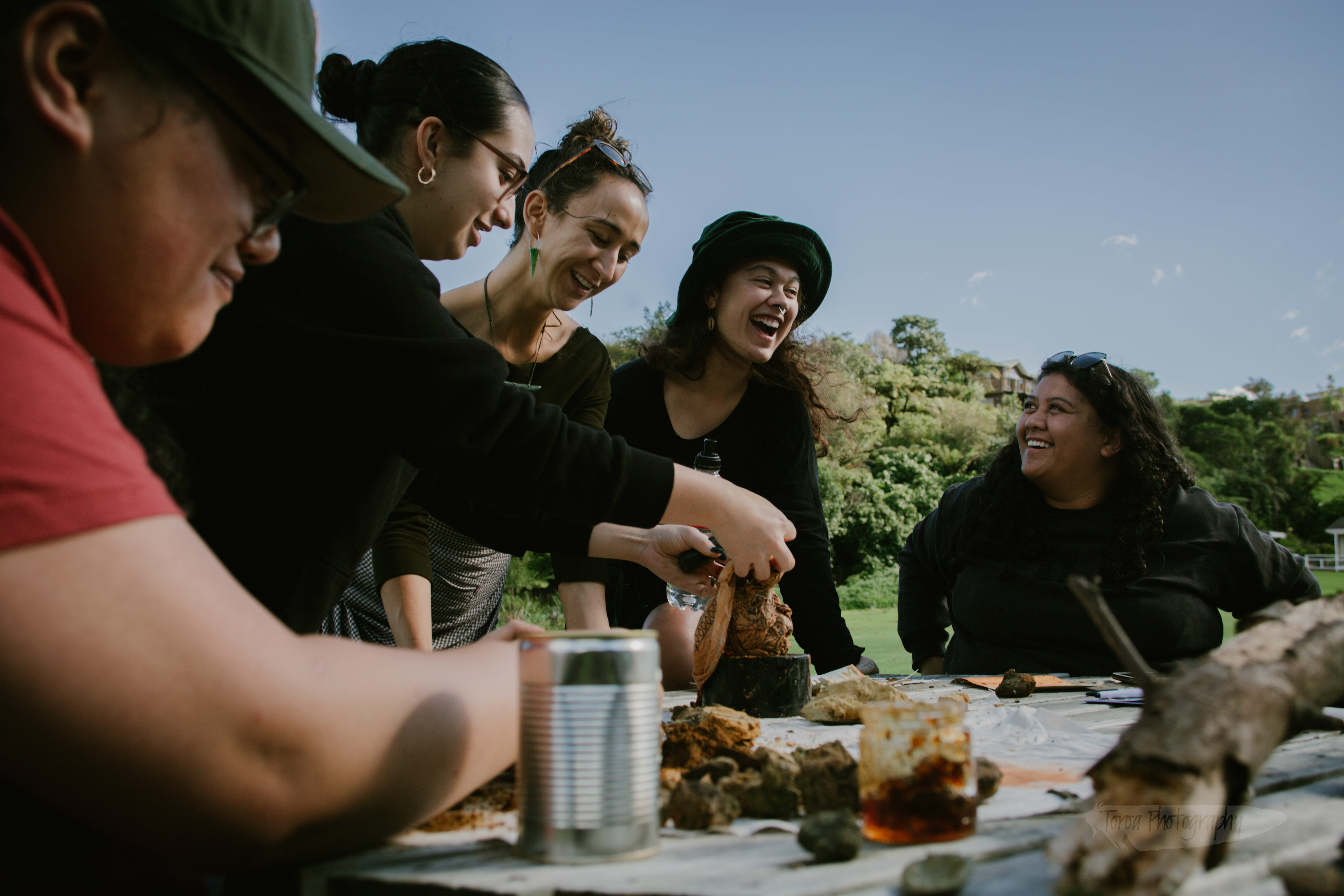02 May 2022

Over the past two years, Creative New Zealand has supported 35 artist and practitioner-led initiatives to protect, cultivate and retain mātauranga Māori related to heritage ngā toi Māori of marae, hapū, iwi, whakapapa-based rōpū and mātāwaka.
We’re one of eight government and cultural agencies working in partnership with mātanga, pūkenga, ngā toi Māori artists, practitioners, marae, hapū and iwi, to deliver strategic initiatives across the motu through the Mātauranga Māori Te Awe Kōtuku initiative.
Announced in 2020 and administered by Manatū Taonga Ministry for Culture and Heritage, the Mātauranga Māori Te Awe Kōtuku programme provided $20 million over two years to fund initiatives that support artists, practitioners, kaitiaki iwi, hapū, marae and Māori communities to safeguard at-risk mātauranga from the ongoing threat of COVID-19.
Of the $3.29 million we received from the programme, we allocated $1.45 million to top-up our existing contestable Toi Ake fund over two years, renaming it Toi Ake – Mātauranga Māori Te Awe Kōtuku for this period. This fund supports ngā toi Māori artists and arts practitioners to work with marae, hapū, iwi, whakapapa-based rōpū and mātāwaka to protect, cultivate and retain mātauranga Māori related to heritage ngā toi Māori and foster their distinctive ngā toi Māori initiatives.
We allocated the balance of Te Awe Kōtuku investment to supporting partnerships with mātanga, pūkenga and ringatoi to protect critically endangered artforms such as Tārai Waka and Taonga Pūoro and regional programmes to preserve and promote mātauranga toi of specific rohe (Māori arts knowledge systems) working with Toi Ngāpuhi and Te Tairāwhiti Arts Festival.
“It’s wonderful to be able to support the 35 key initiatives around the country and across artforms – the response to this fund shows that there is a growing need for support to ensure ngā toi Māori artform and practice knowledge can be retained for the future generations, especially in areas where we only have a very small number of knowledge holders remaining,” Haniko Te Kurapa, Senior Manager, Te Kaupapa o Toi Aotearoa says.
Over the two years, we received many more strong applications than we have been able to fund. In total, we received 120 applications requesting a total of $6.88 million, more than three times the available funding.
“Without further additional government funding we will not be able to boost the budget for future rounds of Toi Ake in the same way and will have to return to our original budget. This means we will only be able to support a smaller number of projects,” Haniko says.
Through Toi Ake – Mātauranga Māori Te Awe Kōtuku we approved a total $2.158 million between September 2020 and April 2022 to support the 35 initiatives, with investment of up to $75,000 each. This included our existing Toi Ake budget and the funding from the Mātauranga Māori Te Awe Kōtuku programme (initially $940,000 and increased to $1.45 million, due to our successfully seeking additional funding to support the significant need). The additional funding ensured there could be a further round, announced last Friday – results linked below.

What we funded
The 35 funded initiatives encompass a diverse range of ngā toi Māori artforms and practice knowledge, including Kaupapa Waka and whakatere waka, ngā tae oneone (use of earth pigments), whāriki, kowhaiwhai, tā moko, tūrapa/tukutuku, karanga, whakairo, mōteatea and specific iwi and hapū arts practice knowledge.
The initiatives are in regions around Aotearoa from the Far North, Rotorua, Whakatāne and Waipā Districts to Whanganui, Ōtaki, Marlborough, Waitaki and Rēkohu Chatham Islands.
One initiative supported a year-long online project promoting Māori use of earth pigments, including the development of He Kapunga Oneone: an online Māori earth pigment portal curated by Kauae Raro Research Collective.

Another initiative supported Ātea a Rangi Educational Trust to ensure the development of traditional sailing and navigation knowledge in the Ngāti Kahungunu rohe. This led to the achievements of Te Matau a Māui Waka Hourua (double hull canoe), which sailed from Napier to Wharekauri (Chatham Islands) using only traditional wayfinding methods for the 800 nautical mile return voyage.
Funding results (September 2020 to April 2022)
- Toi Ake – Mātauranga Māori Te Awe Kōtuku Fund 2022 – closed March 2022
- Toi Ake – Mātauranga Māori Te Awe Kōtuku Fund 2021 – closed October 2021
- Toi Ake – Mātauranga Māori Te Awe Kōtuku Fund – Round 2 – closed May 2021
- Toi Ake – Mātauranga Māori Te Awe Kōtuku Fund – Round 1 – closed March 2021
- Toi Ake Fund – closed September 2020
Related information:
Mātauranga Toi Māori to be protected for future generations
Background information on the Mātauranga Māori Te Awe Kōtuku Initiative (external link)



